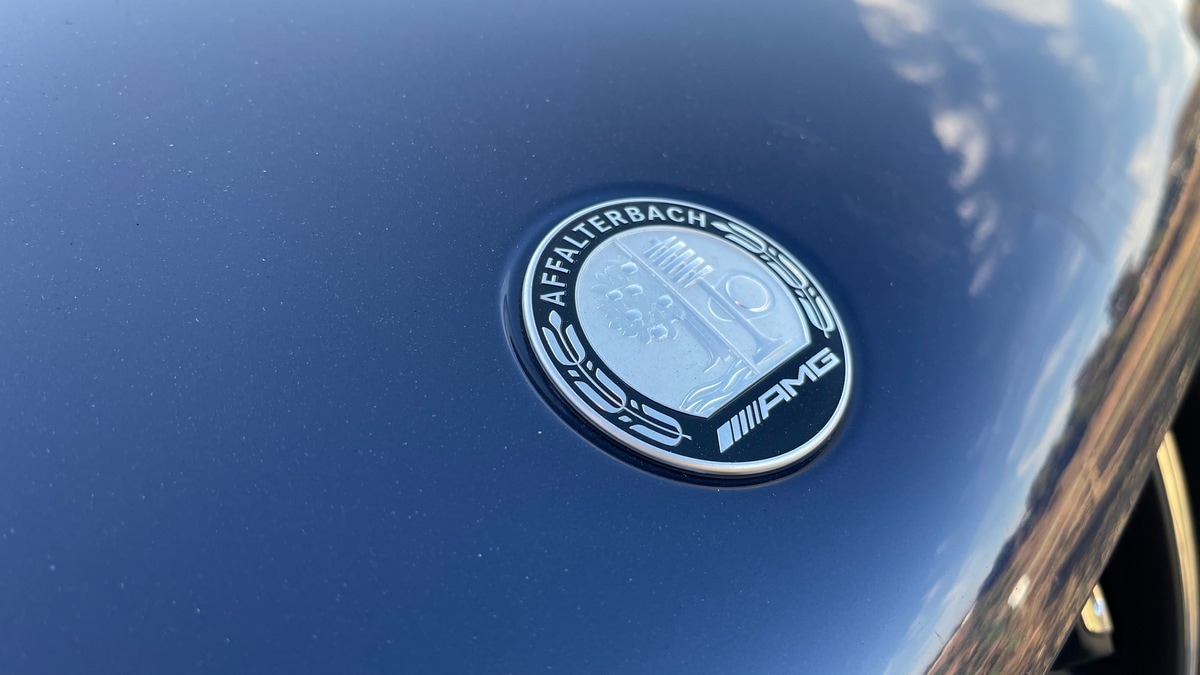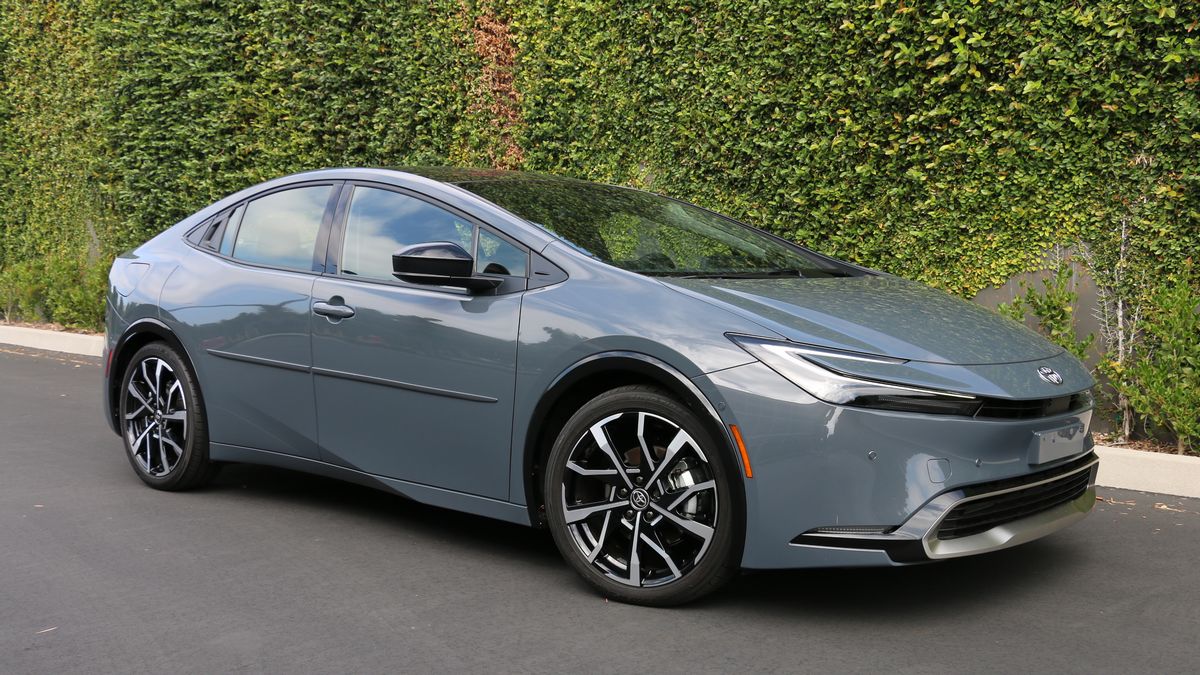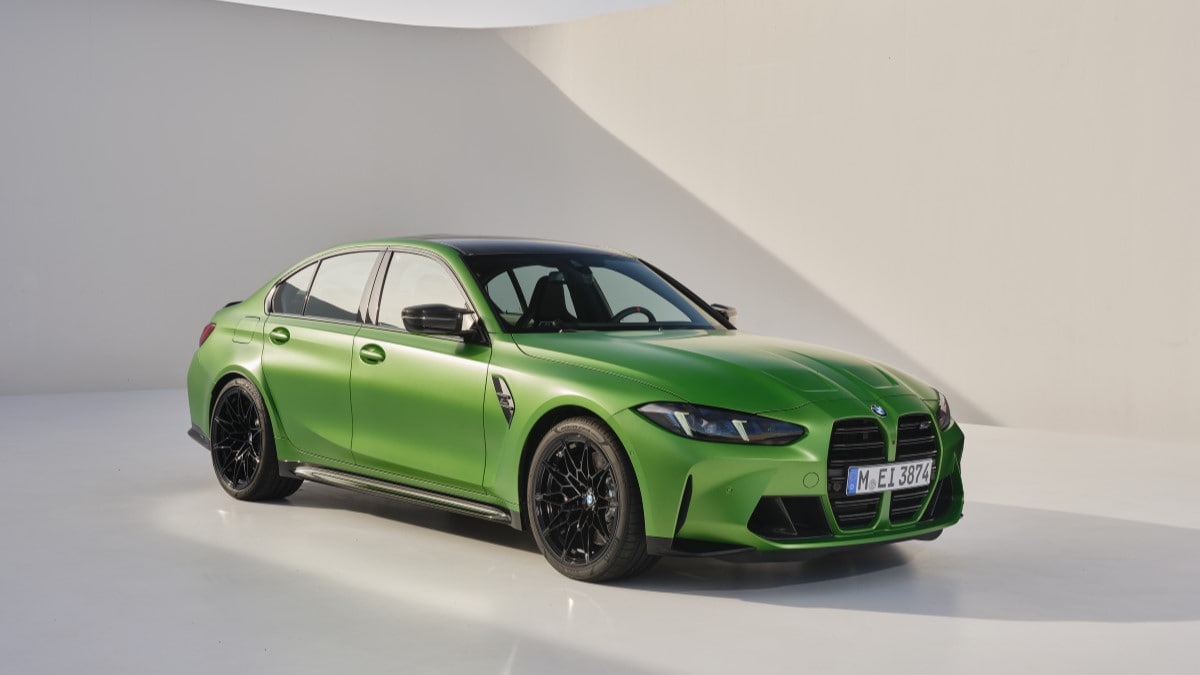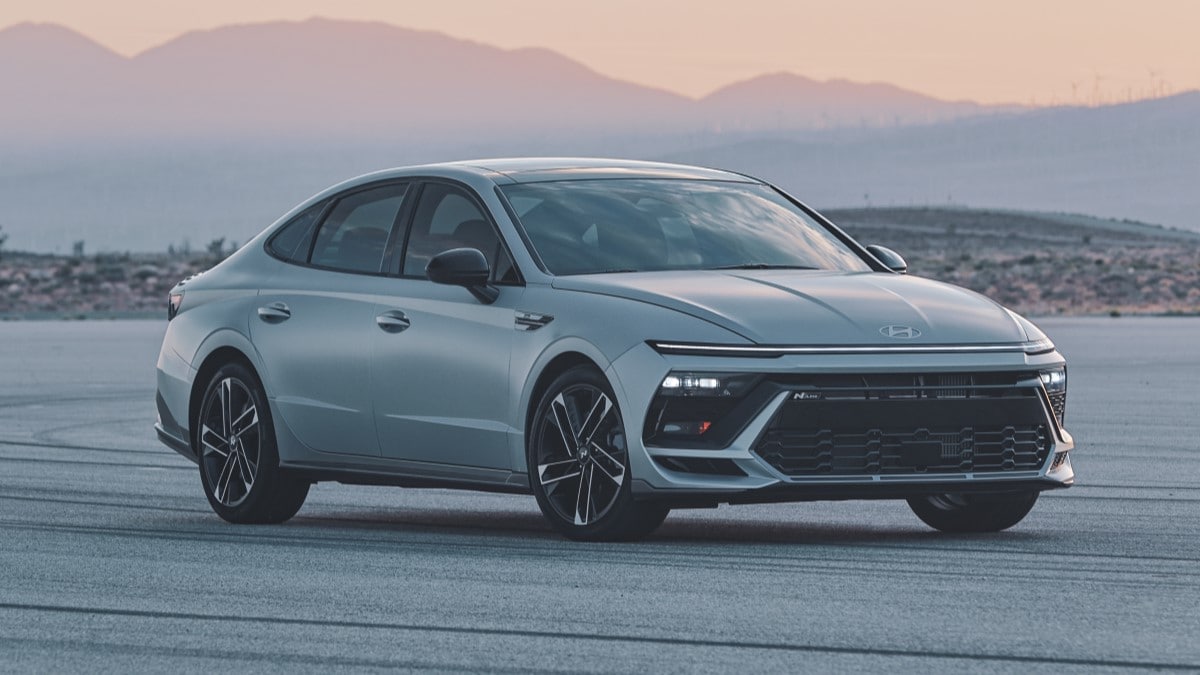Quick Facts About AMG
AMG, or Aufrecht Melcher Großaspach, is the performance subsidiary of Mercedes-Benz. Today, you don’t need to be a Mercedes-Benz owner or a fan to notice AMG affixed to the nameplates across the Mercedes model lineup. Once rather rare and unique, AMG has become so ingrained in the Mercedes-Benz brand that it’s nearly synonymous with it. Let’s look closer at AMG, its origins, and what it means for a Mercedes model to add AMG to its nameplate.
The History of AMG
Hans Werner Aufrecht and Erhard Melcher, former Mercedes-Benz engineers, founded the business in 1967. Großaspach was Aufrecht’s hometown in Germany. In 1993, Mercedes (Daimler-Benz) signed an agreement of cooperation with AMG, which allowed AMG to develop vehicles and market them throughout the Mercedes dealer network. After years of being an independent group specializing in elevating the performance and appearance of its models, Mercedes acquired AMG as a subsidiary in 2005.
Rather than the brand Mercedes-Benz, today’s AMG products are part of Mercedes-AMG. Mercedes has somewhat muddied the AMG brand by offering AMG-lite versions — the AMG Line — of many Mercedes-Benz models. These vehicles sport various AMG styling enhancements inside and out. They also offer sport-tuned suspensions and beefier brakes. Although they resemble Mercedes-AMG models, they are not. Read on.
AMG vs. AMG Line
You can get your AMG in two options. The first is the full AMG. In the majority of AMG models, the most significant element setting the AMG apart from the AMG Line is its hand-built AMG engine crafted by a single technician in Affalterbach, Germany. Following AMG’s “one man, one engine” philosophy, each handcrafted engine bears a metal plaque with the AMG logo and the builder’s signature. These powerful, often twin-turbocharged engines can have twice the performance output of the original mill powering its Mercedes counterpart. There are exceptions to the AMG hand-built-engine rule; we’ll discuss them while providing more details on the engines below.
In addition to the high-output engine, AMG sweetens its offerings with other high-ticket components and features.
AMG
- Upgraded transmission: Wrangling all that extra engine output and funneling it to the wheels are AMG’s competition-inspired transmissions. These can operate as a manual transmission using the steering wheel-mounted paddle shifters or as a conventional automatic.
- Dynamic handling: AMG delivers a performance-tuned suspension capable of handling the over-stimulated engine. Often, AMG incorporates a few high-tech tricks to massage the suspension, making the vehicle more stable and surefooted.
- Performance styling: There is nothing subtle about AMG’s in-your-face design enhancements, including aggressive aerodynamic body elements, larger wheels, quad exhaust ports, unique grilles, and more.
- Customizing opportunities: As if an AMG model isn’t exclusive enough, buyers can often pick from various interior trims, performance groups, and special exterior paint options to make that AMG vehicle their own.
- High-end interiors: AMG emphasizes the uniqueness of its vehicles, loading them with top-notch materials, sport seats, and cutting-edge technology.
- Exhaust note: AMG spends a lot of time and sweat into coaxing that deep-throated rumble out of the exhaust.
AMG-Line
The second option is the AMG Line for drivers who appreciate the performance styling inside and out of the pure Mercedes-AMG models but don’t need the AMG’s big uptick in engine output or eye-widening cost. You may not get to enjoy the AMG engine, but the AMG Line still stirs the soul with its extras, such as the following:
- Sport suspension
- Sport brakes
- Unique AMG wheels
- Rear spoiler
- Sculpted front sport seats
- Sport steering wheel
Why Is AMG Expensive?
Getting the AMG treatment raises the value and the bottom-line price, regardless of the Mercedes model. Not all the contributing factors are readily apparent. We’ve listed some of the obvious and at least one not-so-obvious reasons why premium buyers pay for a Mercedes-AMG.
The handcrafted engine is the biggest contribution to an AMG model’s bottom line. Taking several hours, a single technician painstakingly assembles each AMG engine. The Mercedes-AMG philosophy for the hand-built engines is “one man, one engine.”
Available AMG Engines
Depending on the model you pick, one of several high-performance handcrafted mills will create chaos under the hood with these engines. V8 horsepower and torque numbers may vary by model. Therefore, we’ve provided the high-end numbers.
Handcrafted Engines
| Engine | Horsepower | Torque (lb-ft) |
| 2.0-liter 4-cylinder turbo (M133) | 375 | 350 |
| 2.0-liter 4-cylinder turbo (M139) | 416 | 369 |
| 4.0-liter V8 Biturbo (M177) | up to 630 | up to 664 |
| 4.0-liter V8 Biturbo (M178) | up to 577 | up to 516 |
| 5.5-liter V8 Biturbo (M157) | up to 577 | up to 664 |
| 6.0-liter V12 Biturbo (M279) | 621 | 738 |
AMG-Enhanced Engines
These AMG-enhanced 6-cylinder engines also deliver the go on the below current models. Although not handcrafted, the engines bear the fingerprints of AMG.
| Engine | Horsepower | Torque (lb-ft) |
| 3.0-liter V6 Biturbo (M276) | up to 385 | 384 |
| 3.0-liter inline-6-cylinder turbocharged engine and plug-in hybrid electric motor (M256) | 503 | 553 |
RELATED: Horsepower vs. Torque: Which Is More Important?
AMG Transmission
Although the exact transmission engineering varies among AMG models, each automatic transmission has been meticulously designed to mate with one or more of AMG’s high-output engines. Consequently, it urges the optimum and most efficient performance from the engine. The number of gears (7-speed, 8-speed, and 9-speed) varies according to the engine. However, all are dual-clutch automatic transmissions with a manual-shift option and steering-wheel-mounted paddle shifters.
AMG Interior Perks
In addition to upgraded leather surfaces, custom trim and accents, racing-inspired seating design, truly premium audio systems, and cutting-edge technology, AMG loads the interiors with AMG branding. Floor mats, the steering wheel, and so on display the AMG logo.
AMG Performance Styling
You can expect a Mercedes-AMG model to declare its performance chops with its exterior styling. For example, a unique front grille, an aggressive front bumper with larger air intakes, a trunk-lid spoiler, larger AMG wheels, and an aero package are within AMG’s styling tools.
Motorsports Heritage
One of those factors contributing to a Mercedes-AMG model’s cost that often passes under the radar is AMG’s racing history. Pick just about any performance component on an AMG model, and its development probably relies to some degree on AMG’s storied history of racing. Fielding a Formula 1 car is costly but worth it in the long run as a beta-test platform for performance technology. In other words, what AMG learns — at great expense — on the racetrack often winds up in the showroom.
Why Are There So Many AMG Models?
Keeping track of the Mercedes-Benz models and their iterations is a dizzying undertaking. Stirring all the Mercedes-AMG models into the pot significantly amplifies the task. Incredibly, there are Mercedes zealots out there capable of rattling off every Mercedes-AMG model available, like a baseball fan able to cite the entire batting stats of his favorite team. However, most of us need a cheat sheet of some sort to try to keep the AMG family tree straight.
Below, we’ll look at what some recurring model numbers stand for in numeric order. Spoiler alert: Although the numbers identify the model’s specific powertrain, the relationship between the number and the engine displacement is purely symbolic. That is, an AMG 43 model’s engine isn’t a 4.3-liter.
What Is AMG 43?
A relative newcomer to the AMG family, the 43 designation goes to AMG models with the AMG-enhanced 3.0-liter V6 Biturbo (M276) engine rather than a hand-built one. Among the models it powers is the Mercedes-AMG C 43 family.
What Is AMG 45?
Leading off the list of handcrafted engines is the 2.0-liter 4-cylinder turbo (M133) that AMG stuffs under the hood of models like the Mercedes-AMG CLA S 45.
What Is AMG 53?
With a 3.0-liter inline-6-cylinder engine as the base, the AMG 53 models add some form of hybrid system. It could be the GT 53 with a mild-hybrid (MHEV) setup with an electric motor providing some extra torque at low rpm or the 2025 Mercedes-AMG E 53 with a plug-in hybrid (PHEV) system.
What Is AMG 63?
A homage to the first V8 ever in a Mercedes model (6.3-liter V8 (M100), the AMG 63 variants use one of the two AMG V8 engines: 4.0-liter V8 Biturbo (M177) or its wet-sump sibling, the 4.0-liter V8 Biturbo (M178). In either case, the AMG 63 designation signifies uncompromising performance in models like the Mercedes-AMG C 63 S Cabriolet.
What Is AMG 65?
Reserved for only the highest of high-end AMG models, 65 denotes the 6.0-liter V12 Biturbo (M279) engine. These are the big dogs of the AMG pound, like the Mercedes-AMG S 65 Sedan and the Mercedes-AMG G 65 wagon.
What Is AMG GT?
AMG GT models are sporty “Gran Turismo” vehicles made for comfort that derive power from their 4.0-liter Biturbo V8 (M178) engines, tuned to deliver ascending horsepower and torque. Mercedes-Benz made AMG GT 2-seaters, and Mercedes-AMG is producing the all-new 2024 AMG GT 55 and GT 63.
What Is AMG GT S?
Part of the AMG GT family, the 2017-2021 GT S squeezed 503 hp out of the M178 engine compared to the 456 hp of the contemporary AMG GT. Furthermore, the GT S generated 480 lb-ft of torque to the GT’s 443 lb-ft.
What Is AMG GT C?
A wider version of the base AMG GT, the 2017-2021 GT C, surpasses the GT S model’s stats with 550 hp and 502 lb-ft of torque. In addition to being wider than the GT and GT S, it sported rear-wheel steering.
What Is AMG GT R?
The 2017-2021 Mercedes-AMG GT R was another, more powerful variant of the AMG GT two-door coupe. It upped the output numbers from the M178 Biturbo V8 to 577 horsepower and 516 lb-ft of torque. A far cry from the contemporary AMG GT’s 456 horsepower and 443 lb-ft peak torque number.
Is There an AMG Hybrid?
Mercedes-AMG makes many hybrid variations in its lineup of vehicles; however, most of them are of the mild-hybrid (MHEV) variety, with the emphasis on “most.” In addition to the AMG 53 models, a wide range of other 2024 AMG models with mild hybrid (MHEV) systems are sprinkled throughout the Mercedes-AMG lineup. Although an MHEV system doesn’t power the wheels, it does help boost engine torque at low rpm, like when accelerating from a stop. It also shoulders some of the power demand of electric components.
Arriving sometime in 2024 are the highly anticipated AMG GT 63 S E Performance and the AMG SL 63 S E Performance plug-in hybrids (PHEVs). On tap for 2025 are the AMG GLE 53 in SUV and Coupe form, as well as the AMG E 53 PHEV.
Is There an AMG Electric Vehicle?
Mercedes-AMG offers several fully electric vehicles (EVs), including the AMG EQE Sedan (up to 305-mile range), the AMG EQE SUV (up to 235-mile range), and the AMG EQS (up to 305-mile range).
2024 Mercedes-AMG Lineup
Among the Mercedes-AMG models for 2024 and the EVs listed above are a dizzying array of performance sedans, coupes, roadsters, and SUVs.
AMG SUVs
AMG Sedans
AMG Coupes
AMG Roadsters
What to Know When Buying a New AMG
If you are considering buying a new Mercedes-AMG model, there are a few things to think about.
- Price — You will pay a premium for any AMG model over its Mercedes-Benz counterpart. And, as the model numbers (43, 53, 63, and so forth) increase, so does the price. For example, the regular Mercedes-Benz CLA 250 has a suggested retail price (including the $1,150 factory-to-dealer delivery fee) of $44,350. The Mercedes-Benz CLA 35 will set you back $56,100, while the AMG CLA 45 S will run $66,550.
- Cost of Ownership — Besides paying more for an AMG, virtually everything from car insurance to maintenance and even fuel costs will be higher. For example, the Environmental Protection Agency estimates that as of this writing, the annual fuel costs for the Mercedes CLA 250 will be $2,050, which will increase to $2,586 for the AMG CLA 35 and $2,782 for the AMG CLA 45S.
- Performance Dynamics — Although the thought of all that available power under your right foot is alluring, it’s easy to get in over your head when tapping into an AMG’s incredible torque reserves. We urge you to consider your limitations as a driver when purchasing an AMG model.
What to Know When Buying a Used AMG
As with any used car, you must do your due diligence when considering a used AMG vehicle. Here is a list.
- Fair Book Value — The first priority when considering a used AMG is to determine that model’s fair book (market) value by checking out the Kelley Blue Book Fair Purchase Price.
- Comprehensive Maintenance Records — AMG models are wildly sophisticated machines; therefore, ensure any AMG you consider buying has a complete maintenance history.
- Vehicle History Report — Along the same lines as the maintenance records, you should obtain a vehicle history report using the AMG’s vehicle identification number (VIN) to follow its ownership, determine any crash damage, and so forth.
- Inspection — Have a trained technician go over any potential AMG purchase with a fine-tooth comb.





